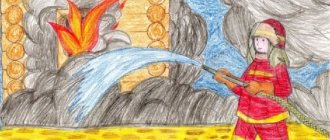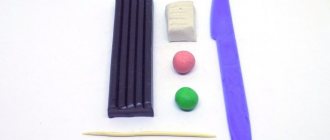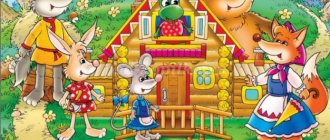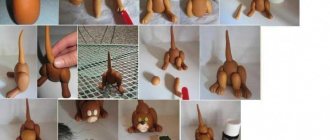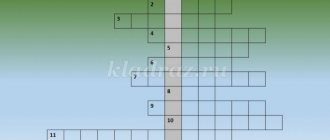Lesson notes for the senior group “Fire is a friend, fire is an enemy” Social world.
Lesson notes for the senior group “Fire is a friend, fire is an enemy” Social world.
Goals:
1. Teach children to talk about the benefits fire brings to man and how man learned to control fire.
2. To consolidate children’s knowledge of what can result from careless handling of fire. Know and follow the rules of behavior in case of fire.
3. Instill in children respect for the work of firefighters.
Methodical techniques:
Game;
Visual;
Verbal.
Equipment:
danger sign, fire symbol, fairy tale “Fire is a friend, fire is an enemy”, pictures, presentation.
Preliminary work: excursion to the fire station, didactic game “Who Needs What,” reading L. Tolstoy’s story “Fire Dogs.”
Vocabulary work:
firefighters, flames, smoke, burn.
Progress of the lesson
Teacher. Children, now I will show you one of the signs, and you must say what it is called. That's right, this is a danger sign. Now let's play. I will stand here, and you will name some danger that a person encounters in life, and approach me one by one.
Children take turns listing: fire, earthquake, accident, flood, flood, poisonous mushrooms and berries, dangerous animals and people, etc.
Teacher. That's right, a person can face these dangers in life. And now I’ll tell you a riddle about one of these dangers, and you try to guess it:
He's a friend of the guys
But when they play tricks on him,
He becomes an enemy
And it burns everything around.
(Fire.)
That's right, this is fire (shows the fire symbol).
And now I’ll tell you a fairy tale about fire: “Fire is a friend, fire is an enemy.”
Once upon a time there was Fire. He was very cheerful and hot. Fire walked wherever it wanted - through forests, houses, trees. Fire spared no one on its way and was the worst enemy of all living things.
Why do you think?
Children. He burned everything.
Teacher. And then one day he met a man on his way and said: “Come on, Fire, let’s measure our strength.” Fire replies: “How can you, Man, compare your strength with me?” But the man insisted on his own, Fire agreed. So their battle began. The man lured Fire to the river and jumped into the water. The Man grabbed the flames with his wet hand and wanted to extinguish them. Fire prayed: “Don’t put me out, Man, I will serve you faithfully.” The Man took pity on him and forced him to serve himself. This is how Fire began to serve Man and became his friend.
Tell me, why does a person need fire?
Children. In order to cook food, keep warm, can provide lighting, light a candle, etc.
Teacher. Without fire, people would never be able to travel on earth, travel through the fields. Fire also works in a car engine - gasoline burns and sets the car in motion. Fire also blazes in furnaces in factories; it melts metal; in other furnaces, fire cooks glass, from which beautiful glass products are blown. A space rocket flies up, leaves a bright tail of flame - this is the rocket fuel burning.
But when fire falls into the hands of small children, it shows its character, strives to run away from them and walk around the house, through the forest, through the field. From a good servant, fire can turn into a fire-breathing dragon. Then something bad might happen.
Tell me, what could cause a fire?
Children. From a match, an unextinguished cigarette butt, an unturned off gas stove and electrical appliances.
Teacher. What can catch fire at home, in the forest?
Besides fire, what else is dangerous about fire?
Children. Smoke - you can choke on it.
Teacher. And now I suggest you play. The game is called "Make no mistake." I will name objects, and if this object is burning, you will raise your hands up, depicting tongues of flame, and if it is not burning, you need to lower your hands.
Words: paper, nail, curtains, tablespoon, notebook, clothes, table, furniture, dry grass, leaves, gasoline, paint.
Teacher. Well done, sit down. Now let’s play the game “Cross – Question”. There is a picture hidden here, if we answer all the questions, we will tell you what is shown there.
Questions for children:
- What are the people called who put out fires and save people and houses from fire? (Firefighters.)
- Why do people need the work of firefighters? (They put out fires in houses, forests, save people, their things, houses.)
- What is their job? (Difficult, difficult, needed by people.)
- What should firefighters be like? (Strong, brave, seasoned, dexterous, decisive.)
- Why do they have to be strong and brave? (They take people out of the fire, work in the fire and smoke.)
- Why do firefighters wear a gas mask? (So that you can breathe when there is smoke.)
- What number do they call firefighters? (“01.”)
- What should you say when calling the fire department? (What happened and exact home address.)
Teacher. Well done, they answered all the questions, and we got a picture - this is a fire truck. You can quickly rush to a fire with it.
Now stand up, we'll play with the ball. The game is called “Catch, throw, answer immediately.”
Why does a fire truck need a siren? (So that everyone can hear and give way.)
Why is the fire truck red? (To make it visible on the roads: red is the color of fire.)
Why does a car need a sliding ladder? (To climb to high floors.)
What are the names of the long hoses used to extinguish fires? (Sleeves.)
Where do firefighters get water if they run out of water in their car? (In wells, from the river.)
Teacher. What do you need to know to prevent trouble from happening? It is imperative to know the rules on how to behave during a fire. We will consolidate them in the game “Allowed - Prohibited”.
Take your traffic lights in your hands and show a red circle if this cannot be done, and a green circle if this can be done:
- In case of fire, call the fire department by calling “01”;
- Throw burning matches;
- Scream and call adults for help;
- Stay in the room where the fire started;
- Open windows and doors during a fire;
- Cover your mouth, nose and head with a wet towel;
- Hide in the corner under the closet under the bed;
- Leave switched on electrical appliances unattended;
- Move crawling or crouching towards the exit;
- Douse walls and floors with water during a fire;
- Use the elevator;
- Do not be afraid to obey the firefighters in everything;
- Extinguish burning electrical appliances with water;
- Ask neighbors for help;
- Try to put out the fire if possible;
- Turn on gas, electrical appliances and lights.
Teacher. Well done, you mentioned all the rules.
The fire leaves behind a terrible trail: instead of a forest, a house - ashes, ash, burnt brands. How does a person suffer from a fire?
Children. He gets burns and suffocates from smoke.
Teacher. It is very important to provide first aid to a person. See what to do if you have a minor burn.
Teacher. You must remember that a fire is not an accident, but the result of incorrect behavior. Today you learned that fire can be both a friend and an enemy for us, but still there is more benefit from it than harm. Fire makes our life warmer and more comfortable. I want you to be very careful with fire, attentive, remember the danger, always follow the rules, and trouble will pass you by.
Kindergarten "Kalinka", Volgodonsk
Program content
: identify the knowledge and skills of children acquired in classes on the social world:
- behave correctly on the street, in public transport;
- imagine possible traumatic situations that are dangerous to health;
- correctly navigate and act in the current situation;
- about family, family relationships, to express a kind attitude towards loved ones in actions and actions;
— basic self-control and self-regulation of one’s actions and relationships with others;
- understand how an adult name and patronymic are formed;
- show interest in the city in which they live; know some information about its attractions and main streets; express your attitude towards the city, your feelings;
— classify transport by type.
Greetings:
Hello golden sun (conn. open.lad.)
Hello, the sky is blue (put your hands up)
Hello, free breeze (shaking hands)
Hello, little oak tree (imitate a tree)
Hello morning, hello day (alternately spread arms to the sides)
We are not too lazy to say hello (they point to themselves and bow).
Q: Children, smile at each other. Our group became brighter because of your smiles. May this joyful mood remain with us throughout. Soon you will go to the preparatory group, but for this you need to get a pass from the “Queen of the Land of Knowledge”. And to get it, you need to complete the tasks that she has prepared for us. And today I propose to go to the Land of Knowledge. What do you think we'll go with? (children's answers). Listen to the riddle: “What kind of miracle is the blue house? The windows are blue all around. Wears rubber shoes and eats gasoline? (Bus)". Yes, we will go by bus, but first tell me what types of transport do you know? (air, water, land).
D/I: “Lay out correctly”
Well done, you completed the task. It's time to go, but the problem is, I don't know where to send us from. Let's remember who lives on which street.
You live on different streets, so I suggest going to the land of “Knowledge” from our kindergarten, what is it called? Let's go to the bus stop. How should you behave at the bus stop while waiting for the bus (children's answers). and here is our bus. I suggest choosing a driver using a counting rhyme:
Stop, cars, stop, engine, brake quickly, driver.
The red eye is looking point blank - this is a strict traffic light!
Get on the bus, sit down. (rules of behavior on the bus)
Now we are good passengers. While we are driving, I will be a tour guide. So, we are leaving our kindergarten, which is located on the main street of the city. What is the name of the main street? (Lenin). On the right side of Kalinka there is a building you know, what is it called? (music school named after Shostakovich). We drive past it, on the left side is the 5th gymnasium, the young technician station. We approach 30 Let Pobedy Street, on the right side there is a square, on it there is a monument to Molodov, the hero of the Afghan War. We cross the street 30 l. Victory and we continue driving along the main street. On the left side there is a clinic, a pharmacy, a chain of stores, name them, Sberbank. We continue driving and now we pass the Post Office - one of the first buildings in the city. We are leaving for the main square, and what is it called, you will tell me now, looking at this monument - Stella - to the fallen soldiers in the Second World War (Victory Square).
Opposite the Stella monument there is a cinema, name which one (October). How many of you went to this cinema? There is also a park here, what is it called? (Victory Park). The Walk of Fame is located in this park. It is also dedicated to the heroes of the Second World War. Who knows what this monument is called (Monument of Military Glory on Great Victory Boulevard). We continue our tour and now we are going to the city of Tsimlyansk. We cross the bridge. What river flows under the bridge? (Don) What other rivers do you know? (answers). Here we are, Stop “Land of Knowledge”. Which door will we go out through? Come out. We need to cross the road. Which side will we go around the bus from? Why? (answers). In pedestrian business, the most important and difficult thing is to cross the road. Pedestrians have their own assistants when crossing the street. RIDDLES: To help you pass the dangerous path, burn, you are day and night - green, yellow, red (traffic light). Look, this strong man, what a five-ton truck (traffic controller) is used to stopping a five-ton truck while moving with one hand. There are no traffic lights or traffic controllers here. How can we cross the road? (Look to the left, and, making sure that there are no cars nearby, start driving). And here is the country of “KNOWLEDGE”. The queen of the country of “Knowledge” wants to find out whether we know how to act when the traffic light is red, yellow, or green. D/I “Red, Yellow, Green”. Well done, you did a great job! Look, guys, what an unusual tree. I guessed: the trunk is our group, the branches are your families, and the leaves that are missing are you. The Queen wants to meet you. We come to kindergarten every day, we love and respect each other. This makes us look like a close-knit family. Attach a leaf to a tree branch and tell about yourself and your family (children's stories). Your family loves you. Your actions can please and upset your loved ones.
D/I "Joy or sadness." I have two mugs - red and black. Which one do you think means joy (red), and which one means sadness (black). I hand out mugs, name actions, the children use the circle to show whether this action will please or upset their loved ones: - You ate all the porridge for breakfast. Got into a fight with a friend. Toys were scattered around the room. Helped mom wash the dishes. They were rude to my grandmother. We drew and gave dad a beautiful drawing. Before going to bed we wished everyone good night. They tore up the new book. They behaved well in kindergarten. I hope that you will do only good deeds?!
D/I: “Igrovisor” Find the extra picture.
Guys, the queen of the land of Knowledge has prepared pictures for us (UMK). Look at them carefully. What are they depicting? (various dangerous situations) Arrange these pictures with the phone numbers you need to call in a particular case: 01;02;03. Check each other. Suddenly a phone call rings in the group. The teacher picks up the phone and listens. Then he tells the children that some stranger is inviting all the children to go for a ride in the car, and then he will take everyone to a cafe and treat them to delicious ice cream. The guys discuss the situation and come to the conclusion that they should not communicate with strangers. The game is played “Call an ambulance, police, firefighters.” Well done, guys, now I’m calm for you - you know what to do in emergency situations. And I suggest playing the game “Finish the sentence.” : Where people are careless with fire, there will be a ball in the sky, there an evil (fire) will always threaten us. A red glow ran, who was playing with matches. The table and wardrobe burned down at once, who dried clothes over (gas) for so many holidays? Smoke suddenly rose in a column, no one turned off the iron. I saw smoke, don’t yawn, and the firefighters... (call). Remember, every citizen is a number... (01). How smart and smart you are, you know everything! And we have to complete the last task - arrange the pictures according to the holidays (New Year - Christmas tree, Christmas tree decorations, gifts...). Let's check if you completed the task correctly. Everything is correct. The most solemn moment has arrived - the presentation of passes to the preparatory group from the Queen of Knowledge herself. (Presentation of tickets). Me, my dears. I am very proud of you - so smart, well-mannered, and I believe that in the preparatory group you will also strive for new knowledge that will definitely be useful to you in life.
I
Goal: development of the emotional sphere of preschoolers.
Tasks:
1. Continue to teach to understand the emotions of others by facial expressions, gestures, and body movements.
2. Develop ideas about the individual characteristics of people, that each person is unique.
3. Continue to cultivate group cohesion, attention to yourself and your partner, the ability to overcome isolation and passivity; desire to participate in joint games.
Material: flying carpet, audio recording of sad and cheerful music: “Crybaby” by D.B. Kabalevsky, “Chunga-Chang” by music by Shainsky, lyrics by Yu. Entin, pencils, albums.
Progress of OOD
Educator: Good morning and smile at everyone,
Bow to your friends on the right and left.
We will be friends, we will always help everyone -
Do you agree? Answer me: “Yes!”
Educator: Today I propose to go on an unusual journey. But before you go on a journey, you need to know who you will be traveling with for the long haul. (The children are in a circle, and the leader recognizes the child by touch. We have recognized everyone, and now we are going on a journey.
Educator: And we will travel on a carpet airplane. You need to stand on this multi-colored carpet, close your eyes and fly.
We arrived at the North Pole and it is very cold here. How can we show that we are cold, sad and lonely?
Expressive movements: knees are closed so that one knee covers the other, hands near the mouth - warmed by breathing.
Educator: We visited the North Pole. Let's continue our journey. Now we are on a magical island where only crybabies live. The people of this island are upset all the time and often cry. Depict the inhabitants of this island. (The play “Crybaby” by D.B. Kabalevsky is played.)
Educator: Which is very sad for the inhabitants of this island. Let's try to cheer up the crybabies. Now divide into pairs. One of you will portray a sad person, the other should cheer him up, make him smile, laugh. You can't touch it with your hands. (Children complete the task; when the task is completed, they change places.)
Educator: Now we get up on our magic carpet and fly further. And they ended up on a wonderful island, where everyone is always joyful and carefree. Let's have fun together with fun music. (The music of “Chunga-Chang” sounds, music by V. Shainsky, lyrics by Yu. Entin.)
Educator: And now we flew on and we ended up on Molchunov Island. On this island no one talks, everyone is silent, communicating with each other using the movements of their hands, bodies, and gaze. Divide into two groups. One should remember some famous fairy tale, assign roles and try to act it out without words. The second group will have to guess what kind of fairy tale this is and who is portraying whom. (Children show a fairy tale.)
Educator: Our journey ends. And our magic carpet flew to the kindergarten. Did you enjoy your trip?
Educator: And now you need to draw what you remember most about your trip. (Children go to the tables and draw.)
Educator: Guys, did you like our trip? Well done, you were friendly, active today and completed all the tasks. I wish you a good mood and that you say good and kind words to each other.
